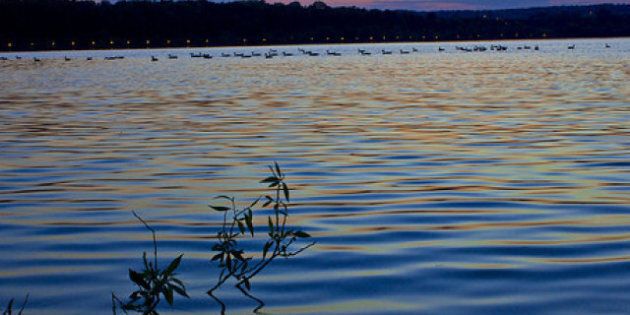
We have the luckiest lake in Ontario, but we'll need to work hard for our luck to continue. Lake Simcoe's water quality has improved since the 1990s due to a huge amount of work and restoration. But we are no longer seeing much in the way of improvement. We have already picked the low-hanging fruit -- the work we need to do in the future is going to be more expensive and harder to do. And the challenge is greater than before; the Lake Simcoe Protection Plan says that we need to reduce the phosphorus loads to the lake by about 40 per cent over the next 35 years for lake trout and whitefish populations to survive without our help.
We have to do this while the population grows. By the year 2031 'high intensity' urban development will increase from nine per cent to 14 per cent of the watershed area (Estimation of the Phosphorus Loadings to Lake Simcoe, 16). This is significant because urban and suburban stormwater and runoff now make up 31 per cent of the phosphorus pollution to the lake (Lake Simcoe Phosphorus Reduction Strategy, 26). Studies say that new development could add 18 per cent to 25 per cent more phosphorus over the next 20 years, while we are supposed to bring phosphorus levels down dramatically (Estimation of the Phosphorus Loadings to Lake Simcoe, Table 5.1). We need to redouble our efforts to save Lake Simcoe.
The Lake Simcoe Protection Plan has 119 policies, and the province and other partners have worked hard to implement or start to implement most of them. Municipalities are responsible for taking the lead on 35 policies. For example, municipalities are responsible for regulating construction practices and tree cutting on the shoreline through their own bylaws. The rules governing these activities need to be improved so that we don't harm Lake Simcoe unnecessarily when building or landscaping. Municipalities will get information and help from the province, but it is up to our local councillors to put the rules in place. They don't HAVE to create all these bylaws. But if they don't, Lake Simcoe will continue to suffer.
Possibly the best thing about the Lake Simcoe Protection Plan is that municipalities are required to put the recommendations of subwatershed plans into their Official Plans. This is not the case outside the Greenbelt, Oak Ridges Moraine and the Lake Simcoe watershed. (A subwatershed is the area that drains into a river, which flows into the lake. Sometimes a few subwatersheds are lumped together and covered in one subwatershed plan.) Subwatershed plans turn broad goals into specific, local actions, and should guide decisions so that our most ecologically important places are protected, and that development has the smallest impact possible.
The investment in Lake Simcoe by the provincial and federal governments will be spent by the end of 2012, and there are no promises of more money. The Lake Simcoe Protection Plan could be used as a template for saving other lakes if the impacts of development can be minimized.